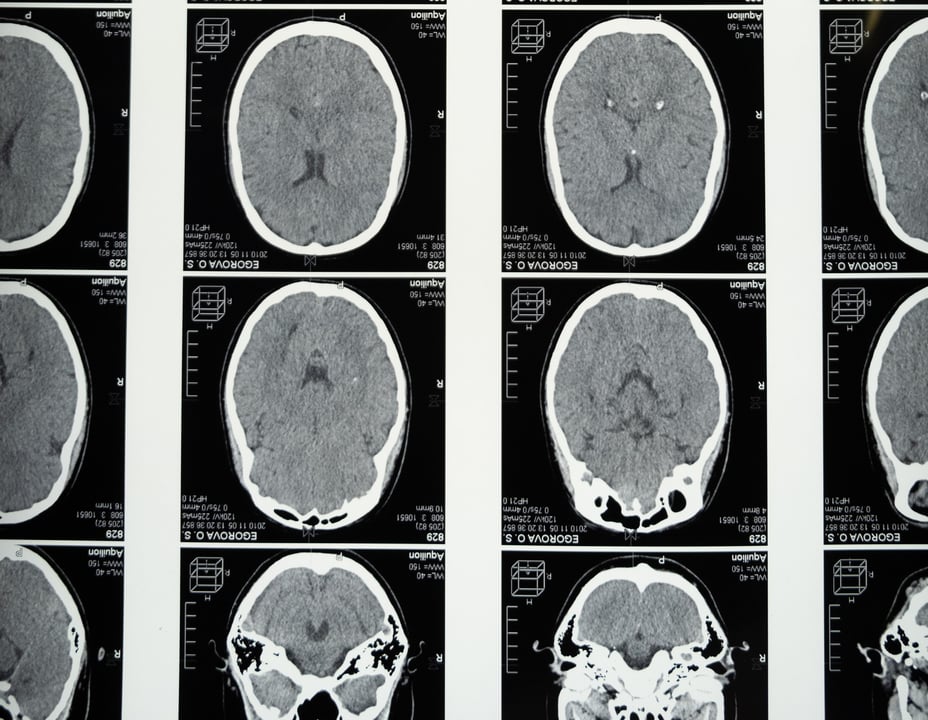The serotonin 5-HT2B receptor was one of the first receptors to be characterized using pharmacological criteria.1 First discovered in the stomach of rats, it was challenging to characterize initially because of its similarity to the other 5-HT2 receptors, particularly 5-HT2C.1,2,3,4,5 In this article, we will explore the key physiological and pharmacological features of this receptor plus its long and complicated relationship with cardiotoxicity.
5-HT2B location
The 5-HT2B receptor has a number of locations in the peripheral (PNS) and central nervous system (CNS). In the CNS, the 5-HT2B receptor is expressed in the dorsal hypothalamus, frontal cortex, medial amygdala, and meninges.2,3 They act as autoreceptors on 5-HT neurons in the dilated residual network (DRN), but rather than directly impacting neuron excitability, they interfere with the serotonin transporter (SERT) system.2
In the PNS, the main location of 5-HT2B is in the cardiovascular system (CVS); however, more work is required to determine the precise location, expression levels, and function of this receptor in the PNS.2 So far, we know that 5-HT2B is expressed by cells in the cardiac valve leaflets: critical structures that prevent the regurgitation of blood between the chambers of the heart.4,6 It is also found in several blood vessels, where 5-HT2B is thought to mediate smooth muscle contraction.4
5-HT2B function
Compared to other 5-HT receptors, the CNS function of the 5-HT2B receptor is relatively unknown.3,7 This is due, in part, to a lack of selective agonists for this receptor.4 So far, we know that 5-HT2B is the main serotonin receptor expressed by microglia and that it may be linked to the development of depression and other mood disorders.3 There are however no known genetic associations between the receptor and antidepressant responses.3
5-HT2B function in the cardiovascular system
Compared to the CNS, there are many studies exploring the role of 5-HT2B in the CVS. In developed humans, 5-HT2B is responsible for exerting mitogenic effects that cause valve interstitial cells (VICs) to differentiate into myofibroblasts.4,6 This maintains the viability and efficiency of the cardiac valve leaflets and is a critical function that, if altered by illness or drugs, can have life-threatening consequences.4,5,6 The receptor also plays a central role in early embryogenesis and cardiac development with peak mRNA expression 8-9 days post-coitum.3 The pathological consequences of 5-HT2B agonism will be explored later in the section titled "5-HT2B cardiotoxicity".
5-HT2B receptor pharmacology
In the next section, we will explore some of the key agonists and antagonists of 5-HT2B and their therapeutic potential (table 1). There have been no selective 5-HT2B agonists discovered so far, which has made it challenging to determine the intracellular pathways associated with this receptor.4,1 For example, we know that the receptor has a protein Z (PZ) binding motif at its c-terminus, suggesting that it interacts with the PDZ protein family (proteins containing PDZ domains play a key role in anchoring receptor proteins in the cell membrane to the cytoskeleton); however, the role of this interaction remains unknown.3
5-HT2B antagonists
There are a limited number of clinical studies exploring 5-HT2B antagonism. Currently, the non-selective 5-HT2B receptor antagonist pizotifen is used in the prophylactic treatment of migraine and is thought to prevent migraine via vasodilation3 or possibly by preventing the effects of endogenous 5-HT by reducing 5-HT-mediated increases in vascular permeability, although some believe the effect of pizotifen and a similar drug, methysergide, might be independent of serotonergic mechanisms. Approval of this drug has led to the development of additional 5-HT2B antagonists that may have similar therapeutic benefits.1,3,4
Despite the lack of research, 5-HT2B antagonists have the potential to treat a wide range of maladies from mood disorders3 to irritable bowel syndrome (IBS).5 It is thought that they could represent an important target for valvular heart disease (VHD) a condition that can be acquired through inappropriate 5-HT2B stimulation (see section on cardiotoxicity below) and can be fatal if left untreated.5,6 Unfortunately, no 5-HT2B antagonists have been trialed for VHD thus far, and no highly selective ligands currently exist for this receptor.5
5-HT2B receptor agonists
The therapeutic use of 5-HT2B agonists is strongly discouraged by the regulators, as 5-HT2B stimulation can lead to valvular heart disease, compromise the opening and closing of the cardiac valve leaflets.6 As a result, there are no targeted 5-HT2B agonists used therapeutically, but they may be used in preclinical research.
| Antagonists | Agonists | |||
| Selective | Non-selective | Selective* | Non-selective | Unintended |
| EG15-76253 | cyproheptadine3 | BW723C863 | fenfluramine | lorcaserin6 |
| LY2720153 | pizotifen3 | RO6001753 | dexfenfluramine | norfenfluramine6 |
| RS1274453 | SB2212843 | pergolide6 | ||
| SB2047413,4 | ||||
| LY2873753 | ||||
Table 1: A list of known 5-HT2B antagonists and agonists. *SB204741 was the first selective 5-HT2B receptor antagonist to be discovered; however, no truly selective 5-HT2B agonists are known.
5-HT2B cardiotoxicity
In 1997, 5-HT2B agonism became a regulatory concern after a third of patients prescribed a drug, fenfluramine, that increased the endogenous release of serotonin and could also itself behave as an agonist at multiple 5-HT receptors, developed cardiac valve defects.6 Fenfluramine was combined with phentermine to create an appetite suppressant called "Phen-fen".1,3,7 Following its discovery in 1979, the combination treatment was prescribed freely to obese patients until 1996 when one clinic reported that 24 women prescribed Phen-fen had developed a fatal heart valve abnormality.7 Physicians across the country began to investigate the cardiac effects of the treatment and found that one-third of patients had developed heart valve defects.7 In response, the FDA requested the withdrawal of Phen-fen from the market on the 15th of September 1997.7
Investigating 5-HT2B cardiotoxicity preclinically
Today, we have clear evidence linking 5-HT2B stimulation to drug-induced valvulopathies.3,5,7 Due to the serious safety risks, the regulators regard 5-HT2B agonism as a toxicity signal that precludes clinical experimentation.3,5,6 It is therefore critical that cardiovascular safety studies are used to screen new compounds for 5-HT2B agonism early in development.3,5
What happens if a drug displays off-target 5-HT2B agonism?
If a drug does display off-target effects, the criteria for clinical advancement depend on a risk-benefit analysis.6 5-HT2B agonists intended for chronic administration are not fit for further development if the safety margin is <30-100, but those intended for short-term use are considered suitable for human investigation if the safety margin is >10.6 The regulators also stress that safety margin data should be generated in functional human cell or tissue-based studies6 rather than in vivo studies. One reason for this is that the function, structure, and location of the 5-HT2B receptor can vary between species.2 For example, the human 5-HT2B receptor is composed of 481 amino acids but is composed of 479 in rats and 504 in mice.1,3,4 In vivo models should therefore be used alongside human-based alternatives such as functional cell-based, in-silico6, and ex vivo assays to determine the safety margin of any drug that stimulates the 5-HT2B receptor.
Example of off-target 5-HT2B agonism approval: lorcaserin
Lorcaserin, a 5-HT2C receptor agonist previously used to treat obesity, is an example of a drug that displays off-target 5-HT2B agonism6 but where both clinical and preclinical studies supported its use based on its relative selectivity for 5-HT2C against other 5-HT receptors. Lorcaserin has 100x selectivity for the 5-HT2C receptor over the 5-HT2B receptor. The FDA insists that any drugs that have valvulopathogical potential are required to undergo intensive post-marketing scrutiny to gain their approval.6 Six post-approval studies were requested by the FDA for lorcaserin, including a long-term cardiovascular outcome trial to assess its effect on major adverse cardiac events.6 The drug was withdrawn voluntarily in 2020 following a clinical study that raised concerns about an increased risk of cancer.
Ex vivo models for investigating 5-HT cardiotoxicity
Cavero et al. (2014) suggest that genetic factors could have protected some patient groups from developing a fatal reaction to Phen-fen.6 If human biomarkers were used to identify patients who were susceptible to valvular disease during the preclinical studies of this drug, the risk of treating different patient groups might have been estimated more accurately.6 Ex vivo assays are an effective way to consider genetic factors influencing adverse drug effects at the pre-clinical stage; however, it may challenging to create an in vitro or ex vivo model of sufficient duration to properly characterize valvulopathies that occur during long-term exposure. The use of in vivo models alongside in vitro models therefore remains important. Below we have listed some examples of human tissue assays that can be used to estimate the effect of test articles on cardiac 5-HT receptors. You can find more examples of ex vivo cardiovascular assays here.
Contractile force in electrically stimulated human ventricular trabeculae muscle (5-HT receptor)
This assay assesses whether test compounds cause an increase in contractile force in electrically stimulated human ventricular muscle with 5-HT as a reference compound.
Contractile force in electrically stimulated human atrial pectinate muscle (5-HT receptor)
This assay assesses whether test compounds cause an increase in contractile force in electrically stimulated human atrial muscle with 5-HT as a reference compound.
References
- Hensler GH. Serotonin. Basic Neurochemistry 8 (2021).
- Deurwaerdere et al. 5-HT Interaction with Other Neurotransmitters: Experimental Evidence and Therapeutic Relevance - Part B. Progress in Brain Research (2021).
- Vilaro et al. Handbook of the Behavioural Neurobiology of Serotonin. Handbook of Behavioural Neuroscience (2020).
- Hoyer D. 5-HT-2B Receptor. xPharm: The Comprehensive Pharmacology Reference (2007).
- Padhariya K et al. Cardiovascular Concern of 5-HT2B Receptor and Recent Vistas in the Development of Its Antagonists. Cardiovascular & Haematological Disorders-Drug Targets 17 pp 86-104 (2017).
- Cavero et al. Safety Pharmacology assessment of drugs with biased 5-HT2B receptor agonism mediating cardiac valvulopathy. Journal of Pharmacological and Toxicological Methods 69 pp 150-161 (2014).
- Kolata. How Fen-Phen, A Diet 'Miracle,' Rose and Fell. The New York Times pp 1 (1997).










